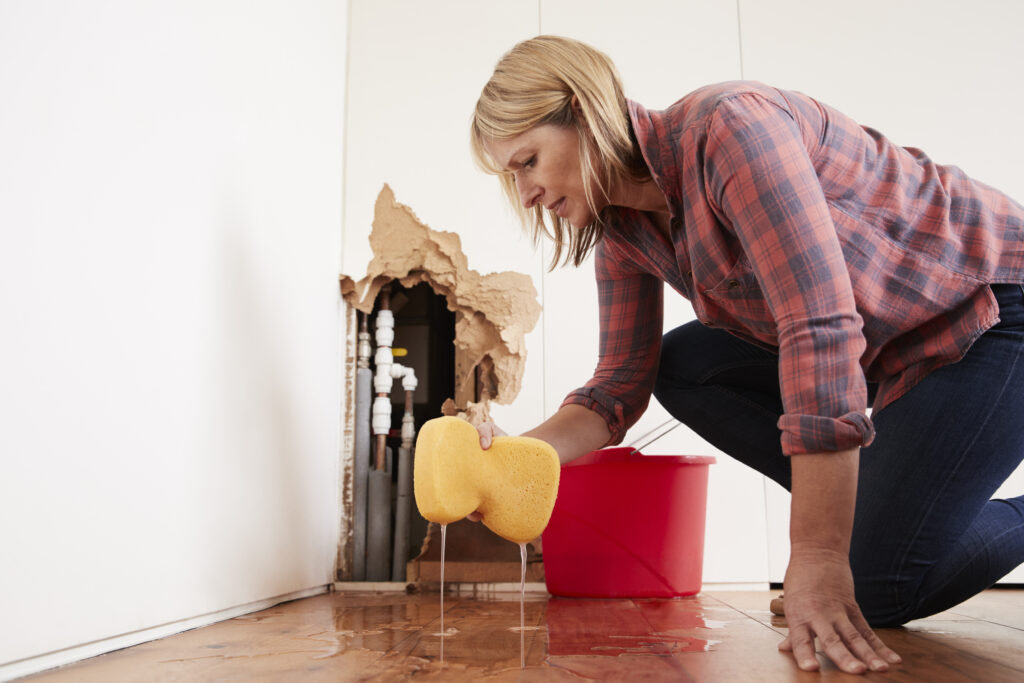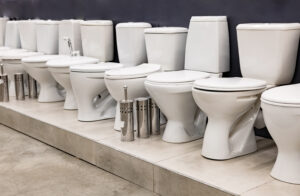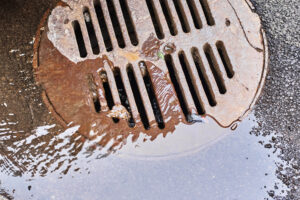Water leaks. They are annoying, but no one wants to deal with them! However, whilst a “small” leak can be a minor nuisance, it can quickly turn into a costly headache if left unchecked for too long. But the most disastrous are the leaks you can’t see (yet!)
If you’ve noticed damp patches, strange smells, or even peeling paint on your walls, it’s time to take a closer look. In this post, we’ll help you identify the common causes of water leaking through your walls, how to spot the signs early, and what steps you can take to fix the problem before it gets worse.
What Is Water Ingress?
Water ingress happens when moisture finds its way into your home’s structure. Unlike obvious flooding or leaks that you can immediately spot, water ingress is a slow process where moisture seeps through walls, ceilings, or foundations due to plumbing and building defects or other environmental factors. Because of this, water ingress doesn’t cause instant damage, only revealing visible signs after weeks, months, or sometimes even years.
Why Should You Care About Water Ingress?
Over time, excessive moisture can weaken key structural elements like wooden beams and can cause foundations to deteriorate. Walls may develop cracks that worsen over time, making repairs more expensive and complicated.
Beyond the obvious structural concerns caused by moisture, water ingress also creates the perfect environment for mould to grow. Mould spores spread quickly in damp conditions, leaving unsightly stains and musty smells. More importantly, mould can cause serious health issues that can exacerbate conditions like asthma, allergies, or weakened immune systems.
Common Signs Of A Water Leak In Your Walls
Spotting a wall leak early can save your home from major damage. These warning signs will help you act quickly before things get worse.
- Damp patches and discolouration: Discolouration or staining is usually the first visible sign of a wall leak. Watch for yellowish, brownish, or dark patches on walls and ceilings. These stains show up as round wet patches without mould at first, which suggests hidden moisture behind the surface. Unexplained damp areas that feel wet need immediate attention as they point to active water seepage.
- Peeling paint or warped surfaces: Water from leaks makes paint separate from walls and creates bubbles, cracks, or peeling. The damage starts with blistering before the paint actually peels off. Plasterboard and timber soak up water, which therefore begins to swell, leading to warping or buckling. Soft or caved-in walls show that water has soaked through enough to weaken the structure.
- Musty smells and mould growth: Hidden moisture often leaves a musty smell like wet cardboard. The smell gets stronger near leak spots and corners. Black or green spots, especially in corners, are clear signs of mould.
- Unusual sounds like dripping or hissing: Noise can be an indicator of an active leak. Water squeezing through cracked pipes makes a hissing sound, while collected water creates a dripping noise. These sounds may stop when you turn off the main water supply, which means that it is likely a plumbing issue rather than outside water getting in.
- Unexpected rise in water bills: If your water bill suddenly spikes without any change in your daily water use, it could be a sign of a hidden leak. Research suggests that even small leaks waste hundreds to thousands of litres monthly, which shows up as higher utility costs.
What Causes Water to Leak Inside Walls?
There are a number of reasons water can find its way inside your walls, and understanding these causes is key to catching problems early before they lead to serious damage. From aging plumbing to structural issues and even external factors like rain and clogged gutters, each cause has its own warning signs and solutions.
1. Old or Damaged Plumbing Systems
One of the most frequent causes of leaks inside walls is aging or deteriorating plumbing. Over time, tiny holes or cracks can develop in your pipes, allowing water to slowly escape behind your walls without being immediately noticeable.
Homes with older plumbing, especially those with galvanised steel or early copper pipes, are at greater risk. These pipes tend to corrode internally and become brittle as they age. High water pressure only adds strain to old joints and fittings, sometimes causing them to rupture and leak.
2. Poor Construction or Faulty Materials
Sometimes the problem starts right from the building phase. Wall seepage often results from low-quality materials or insufficient waterproofing during construction.
One review found that over 70% of building insurance claims related to water damage stemmed from defects like improper waterproofing. Faulty workmanship, poor site supervision, and the use of the wrong materials create weak points in your walls, making it easier for moisture to slip in and cause damage.
3. External Water Sources: Rain, Gutters, and Drainage
Water leaking through walls often originates from outside your home. Over time, constant exposure to rain can cause cracks in exterior walls, allowing moisture to seep inside.
Blocked gutters and downspouts can also lead to water overflowing near your foundation, increasing pressure on your walls. This pressure pushes water against your foundation, further encouraging leaks. Regularly cleaning your gutters once or twice a year is an easy yet crucial way to prevent these problems.
4. Foundation Shifts and Structural Cracks
Your home isn’t as immovable as it seems. Foundations and walls can shift due to changes in the soil beneath them. Clay-rich soils, in particular, expand when wet and contract when dry, causing your foundation to move and crack. This creates new entry points for water, especially during heavy rain.
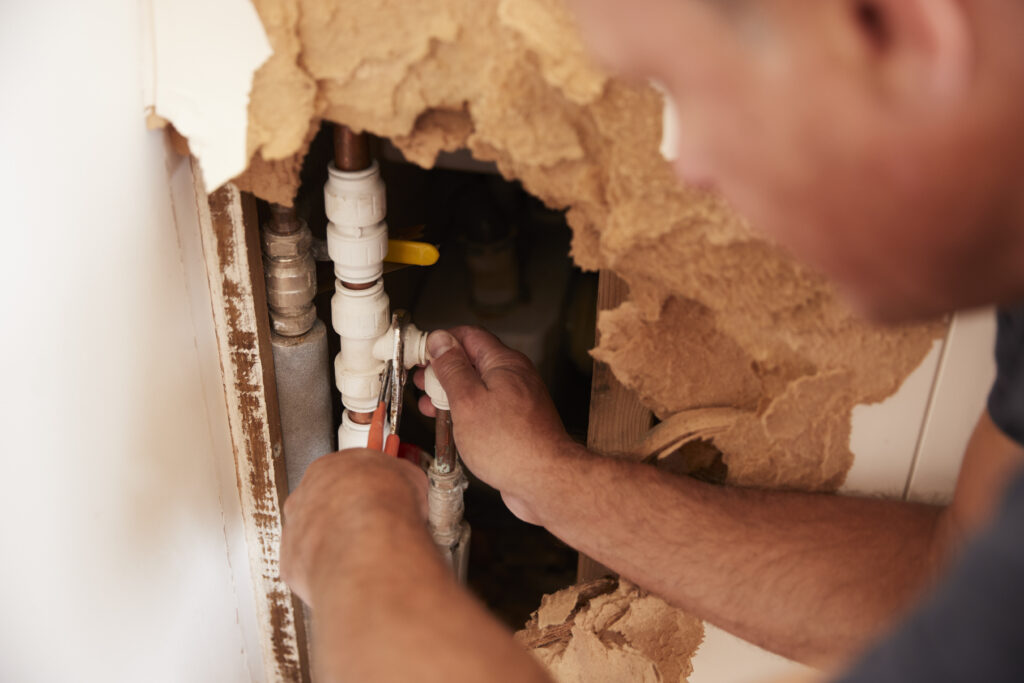
How to Detect a Leak in the Wall
There are several tools and techniques that can help detect different wall leaks, ranging from simple DIY checks to more professional equipment.
1. Using a Moisture Meter
A moisture meter is a device that measures the amount of water inside building materials like drywall, wood, or concrete. These meters provide quick readings that reveal dampness hidden beneath the surface.
There are two main types:
- Pin-type meters: These have small probes that gently penetrate the material to give precise readings in specific spots.
- Pinless meters: These use electromagnetic sensors to scan larger areas without breaking the surface.
To get accurate results, press the meter firmly against the wall and take readings at multiple points. Moisture levels above 15-20% typically indicate a leak that needs attention. For masonry walls, you can even trace a leak by driving a nail into a damp area, attaching an insulated wire to the nail and one-meter probe, and touching the other probe to different wall sections to see where moisture spreads.
2. Infrared Camera for Temperature Differences
Infrared, or thermal imaging cameras, detect temperature changes caused by moisture, since wet areas tend to be cooler than surrounding dry spots. These cameras translate temperature differences into colours, where wet areas often show up as blue or purple.
3. Water Meter Test for Hidden Leaks
You can also perform a simple water meter test at home to check for hidden plumbing leaks:
- Turn off all water-using appliances and fixtures.
- Note your water meter reading.
- Wait at least an hour – overnight works even better.
- Check the meter again.
If the reading has increased, it’s a clear sign you may have a hidden leak somewhere in your plumbing system. In cases like this, consulting with a plumbing specialist can provide expert solutions to pinpoint and fix the problem quickly.
4. Checking Exterior Drainage and Caulking
Some leaks inside walls often start from outside. Regularly inspect your gutters and downspouts to make sure they’re clear of debris. Clogged gutters can cause water to overflow near your foundation, increasing the risk of leaks.
Also, check the caulking around windows, doors, and vents. Cracks or worn-out seals let moisture slip inside, creating pathways for water to enter wall cavities. Keeping these areas well-sealed is a simple but effective way to prevent water ingress.
Repair Options Based on the Source of the Leak
1. Fixing Plumbing Leaks
Leaks hidden inside walls from plumbing issues need fast, temporary fixes to prevent further damage before a permanent repair can be done:
- Turn off your home’s water supply immediately to stop ongoing leaks.
- For small leaks, apply epoxy putty to seal the damaged area — but make sure the pipe surface is clean and dry first.
- For larger leaks, use high-density rubber strips secured with hose clamps to contain the leak temporarily.
Keep in mind, these are short-term solutions. Permanent repairs often require opening up walls to locate the exact leak and replace the damaged pipe or fittings. Because of the complexity, especially in walls with plaster, brick, or other materials, it’s important to hire qualified plumbers to handle repairs safely and correctly.
2. Repointing Brickwork and Sealing Cracks
Water can seep through cracks or deteriorated mortar joints in brick walls. Repointing is a process that refreshes mortar joints, filling gaps and helping manage moisture in your walls.
- Remove old mortar (called raking out).
- Lightly dampen the joints with a fine water spray.
- Push new mortar firmly into the joints using a pointing iron.
- Allow the mortar to partially harden before finishing the surface.
This maintenance keeps water out, preserves your home’s structural integrity, and allows the wall to “breathe,” letting moisture evaporate properly.
3. Resealing Windows and Doors
Leaky windows and doors are a common entry point for water into your walls. To reseal them effectively:
- Remove all old, cracked caulking using a utility knife or scraper.
- Clean the area thoroughly with rubbing alcohol to ensure good adhesion.
- Apply a high-quality silicone sealant (a single, smooth motion works best!). Silicone is flexible, waterproof, UV- and mould-resistant, making it ideal for lasting protection.
For larger gaps, apply two thin layers rather than one thick one. Allow the sealant to cure for 24 hours before exposing it to moisture.
4. Roof Repairs or Replacement
If your roof is leaking, decide whether repair or replacement is the best option:
- You can often fix localised damage like loose shingles, cracked flashing, or minor punctures.
- If your roof is near the end of its expected life (typically 20-25 years for asphalt shingles) or has widespread damage, a full replacement may be more cost-effective and foolproof.
Temporary fixes like tarps can protect your home during storms until permanent repairs are made. For metal roofs, use specialised sealants designed for metal surfaces after a thorough cleaning.
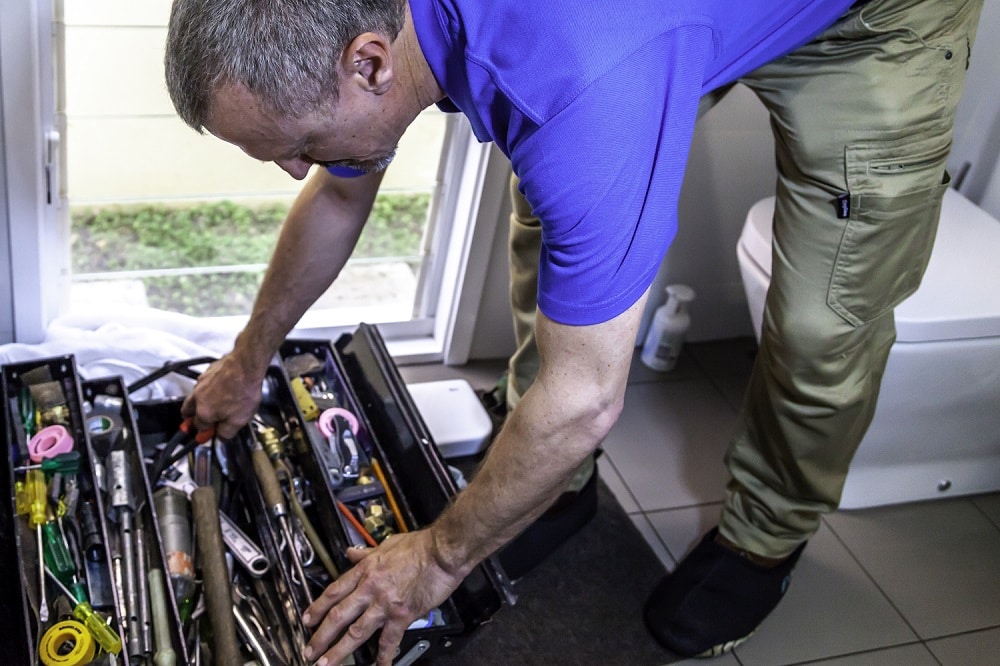
Preventing Future Wall Leaks
The best way to avoid costly water damage is to stop leaks before they start. By staying on top of simple maintenance tasks and using the right materials, you’ll significantly reduce the chances of water leaking from your walls, protecting your home’s value and comfort.
Schedule Regular Plumbing Inspections
Regular checkups help catch tiny leaks or weak spots before they develop into major problems inside your walls. Maintenance, like replacing worn washers and seals as soon as you notice them, can prevent moisture from creeping into wall cavities and causing damage.
Booking a professional plumbing inspection at least once a year is a smart investment. Experienced plumbers will thoroughly check your pipes, fixtures, and connections for early signs of wear or damage, things you might easily miss.
Maintain Gutters and Downpipes
Clogged gutters are a common culprit behind wall leaks. Leaves, twigs, and debris block water flow, causing gutters to overflow and pool water near your home’s foundation. Over time, this water seeps into your walls and creates moisture problems.
To keep gutters flowing freely, clean them at least twice a year, especially after big storms. You can also install helpful accessories like mesh guards that filter out debris.
Don’t forget to check gutter straps to ensure gutters stay securely attached to your fascia boards. Trimming overhanging branches also reduces debris buildup and lowers the chance of storm damage.
Upgrade or Repair Insulation and Waterproofing
Insulation plays a key role in preventing moisture buildup inside walls. Over time, insulation can become compressed or damaged, reducing its effectiveness. Older homes, especially those built before the 1990s, often benefit from upgraded insulation.
Alongside insulation, applying waterproof coatings creates a strong moisture barrier. Some advanced products even strengthen your walls while waterproofing them, giving you double protection against leaks.
Use Quality Materials for Repairs
When sealing cracks or joints, never cut corners on materials. High-quality silicone sealants provide flexible, durable seals that resist cracking and keep water out for the long haul. Many premium sealants also contain fungicides that prevent mould growth.
For masonry repairs, use specialised cement-based waterproofing sealants designed specifically for concrete and brick. Before applying, make sure surfaces are clean and fully dry, and apply sealants in smooth, even beads for the best moisture barrier.

When Is It Time To Call a Professional?
Sometimes, finding and fixing a leak isn’t as simple as it seems. Professional plumbers have specialised training and access to advanced tools that most homeowners don’t have. They have the knowledge and skill to accurately diagnose the source of leaks and fix them thoroughly, preventing further damage and costly repairs down the line.
Key Takeaways
Water leaking through your walls might start as a small, hidden problem, but if left unchecked, it can lead to serious damage, costly repairs, and even health risks. The key to protecting your home is early detection and knowing exactly what to look for. From understanding the causes of leaks to using the right tools and knowing when to call a professional, taking proactive steps can save you time, stress, and money.
Remember, moisture doesn’t wait, and neither should you. Keep an eye on your plumbing, maintain your gutters, and don’t hesitate to get expert help if something feels off! At GA PERRY, our experienced residential plumbing specialists are here to help you find and fix hidden leaks before they become bigger problems. Whether it’s a mysterious water stain or an ongoing damp issue, we’ve got the tools and know-how to get it sorted quickly and effectively. Contact us today to book an inspection and protect your home from unwanted water damage!
